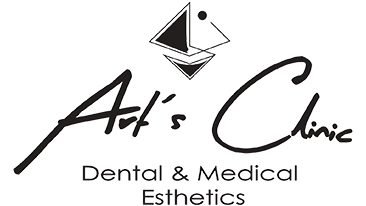orthodontics
Orthodontics
Orthodontics is a discipline that corrects dental and bone malpositions in order to find a satisfactory function and esthetics.
Promoting good dental occlusion, it has an important effect on the patient’s general health. Indeed, an orthodontic treatment improves the efficiency of chewing, the quality of swallowing, phonation, breathing, allows a more effective dental brushing thus fighting against the phenomena of inflammation and loosening of the gum.
This specialty also has an important aesthetic dimension for the patient.
How’s the treatment going ?
After a first consultation with your orthodontist, an orthodontic assessment is carried out including panoramic x-rays and teleradio in profile, photos, as well as digital or conventional impressions.
Following which a diagnostic analysis is established, and a treatment plan will be proposed to you with the type of equipment that will suit you best.
At what age can you start your orthodontic treatment?
Orthodontic treatments can be started at any age.
Early management, called the interception phase, can be performed in some cases from the age of 4, to avoid possible late complications.
Generally children between the ages of 7 and 10 can consult the orthodontist for diagnosis and adequate orthodontic treatment.
Orthodontics for adults is booming, thanks to the advent of new technologies. Innovative orthodontic methods such as transparent ceramic rings, lingual orthodontics or transparent thermoformed aligners have made orthodontic treatments much more discreet – even invisible.
Les traitements orthodontiques peuvent être entrepris à n’importe quel âge.
Une prise en charge précoce, appelée phase d’interception peut être réalisée dans certains cas dès l’âge de 4 ans, pour éviter d’éventuelles complications tardives.
Généralement les enfants entre 7 et 10ans, peuvent consulter l’orthodontiste pour un diagnostic et un traitement orthodontique adéquat.
L’orthodontie pour adultes quant à elle connaît un véritable essor, grâce à l’apparition de nouvelles technologies. Des méthodes orthodontiques innovantes comme les bagues en céramique transparente, l’orthodontie linguale ou les gouttières transparentes thermoformées ont permis de rendre les traitements orthodontiques beaucoup plus discrets – voire invisibles.
What are the different types of orthodontic appliances?
THE VESTIBULAR APPARATUS
It is the most frequently used technique in orthodontics. Brackets (small metal or ceramic plates) are glued to the surface of the teeth, arches are inserted and ligated on these brackets. The arcs being super-elastic, will gradually return to their original shapes and thus align the teeth. The transparent ceramic brackets are much more natural and more aesthetic.
THE LINGUAL DEVICE
As an alternative to conventional techniques, the lingual appliance can treat the majority of orthodontic problems as effectively. Completely invisible from the outside, because they are fixed on the inside of the teeth, on the tongue side, these fasteners are intended for patients who prefer aesthetics for professional or private reasons. Made to measure, perfectly adapted to the teeth, and extremely flat, they ensure a degree of comfort that requires an adaptation period and a well-controlled brushing.


THE LINGUAL DEVICE
An alternative to conventional techniques, the lingual device is used to treat
majority of orthodontic problems as effectively.
Totally invisible from the outside, because they are fixed on the inside of the teeth, on the side
of the tongue, these attachments are intended for patients who favor aesthetics more
for professional or private reasons.
Made to measure, perfectly adapted to the teeth, and extremely flat, they
provide a degree of comfort that requires a period of adaptation and brushing
well mastered.


INVISIBLE GUTTERS
Invisible appliances move teeth with removable gutters
transparencies also called aligners, change every two weeks and
wear at least twenty hours a day (except during meals and brushing
dental).
The gutters are made to measure from specialized software that allows
also to visualize the desired dental movements. Teeth move
gradually with each change of gutter.
Their advantage is their discretion and ease of maintenance, as well as the comfort
obtained during meals, since they are removed for eating and for brushing
teeth.
Aligners procedure
The impressions of your teeth once scanned, a virtual set-up is carried out visualizing the ideal position of the teeth. 3D models are produced and the gutters then custom-made, and in a predetermined number. A regular wearing of twenty hours a day, two to three weeks per splint is recommended with a check with your orthodontist every four to six weeks.

